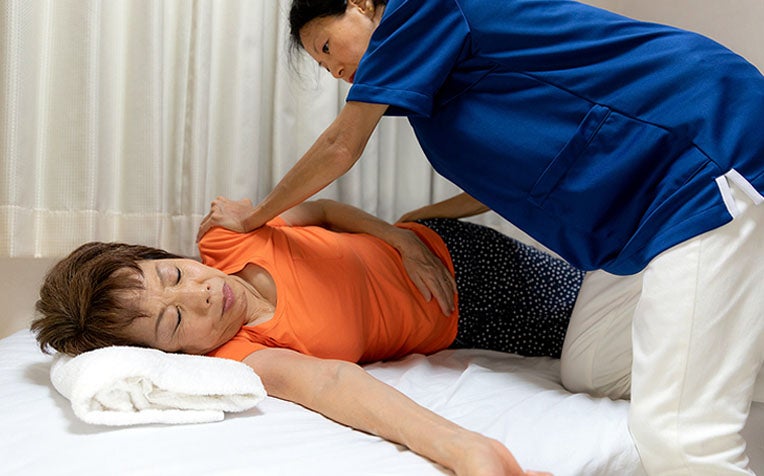
Prevent pressure injuries like bed sores by changing the lying position of the bed-bound person every two hours.
Pressure injuries affect about 180 per 100,000 Singaporeans.
"A pressure injury to the skin and its underlying tissues is often caused by prolonged lying or sitting in the same position for long periods of time," explained Community Nurse & Nurse Clinician, Ms Low Bee Geok from the Changi General Hospital (CGH) Wound Healing Centre, a member of the SingHealth group.
Common pressure injuries include:
Bed sores, also known as pressure ulcers, are commonly found over bony areas of the body due to limited mobility. Common areas on the body where bed sores are found include the ears, back of the head, shoulder blades, elbows, back, spine, hips, buttocks, ankles and heels.
Diabetic foot ulcers, which occur on the feet, heels or toes of people living with type 2 diabetes.
Arterial ulcers, which occur when the affected area does not receive blood supply. They are most often found on the toes, feet, heel or ankles.
Venous ulcers occur when blood pools up in the veins due to valves not working properly. They are most often above the ankle.
Time doesn't always heal all wounds
"An untreated pressure injury can worsen and infection may set in, causing wounds to present with dead tissues and pus. The person may experience pain or discomfort, and show signs of lethargy or fever.
Such pressure injuries can take months or event years to heal - and as they worsen, they can become harder to treat. In serious cases, sepsis may set in, which can be life-threatening," added Ms Low.
6 Ways to prevent pressure injuries
When it comes to preventing and managing pressure injuries, just remember the acronym I.N.J.U.R.Y.
1. Incontinence care /incontinence-care-icon.jpg)
Constant exposure of skin to moisture from urine or faeces can cause skin damage, increasing risks of pressure ulcers. Practise good personal hygiene to prevent skin breakdown.
Cleanse skin with water or pH-balanced cleansers, and dry skin gently and thoroughly after each episode of incontinence. Check with a wound care specialist or nurse on suitable products for protection and dry skin.
2. Nutrition and hydration /nutrition-and-hydration-icon.jpg)
Eating a balanced diet provides the nutrients required to maintain healthy skin. Read the next page to learn more.
3. Just move /just-move-icon.jpg)
Move regularly to prevent pressure injuries. Turn bed-bound patients every two hours, changing their lying positions to the right, left and flat.
If chair-bound, change positions at least thrice per hour while seated. With a caregiver’s help, lean forward and back or to the sides; raise the body from the chair by lifting upward, or lift feet off the footrest regularly.
4. Use pressure-relieving surfaces /pressure-relieving-surface-icon.jpg)
There are many types of mattresses, cushions and aids designed to reduce pressure on the skin.
5. Reassess skin regularly /reassess-skin-regularly-icon.jpg)
Detect pressure injuries early by checking the skin for:
Unhealthy colour changes that do not go away, such as red, purple, blue or black skin.
Skin texture changes like dry patches, swelling, blisters or skin breakage.
Changes in skin temperature, such as warmer or cooler areas of skin.
6. You should seek medical help early /seek-help-early-icon.jpg)
See a healthcare professional if you notice skin changes. A worsened pressure injury can become harder to treat and lead to complications.
This article was adapted from CGH's Caring Magazine (Issue 1, 2022)
Ref: J22
Check out other articles on first aid:
How to Clean and Treat a Skin Wound
Home Emergency Kit: What Every Home Should Have
How to Treat Minor Injuries at Home and When to See a Doctor
Contributed by
















 Get it on Google Play
Get it on Google Play